Lecture Notes – Character design for GDD
- Start with simple shapes
- Characters come from observations of real world people
- Archetypes e.g. protagonist / villain
- Thumbnails can be good deliverables
- Elevator pitch
- Don’t explain everything about character, let the player find out
“What if the thing games most have to show us is the higher-order domains to which we might belong, including families, neighbourhoods, cities, nations, social systems, and even formal structures and patterns?”
Characters give the player a reason to learn about the world, people are the raw material for social systems.
‘Player’ is a useful pretence, an abstraction of everyone you hope will play your game, but also, everyone you cant imagine will play it.
A very important rule about character design is – form follows function. Shapes and silhouettes influence characters, and can provide contrast between the characters and their environments.
First concepts
Here are my very first character concepts. I had vivid ideas of how each character would look, dress and behave after designing their respective shops in the town. From out last guest lecture, I also had the idea of experimenting with animal designs but I was leaning more towards human characters.
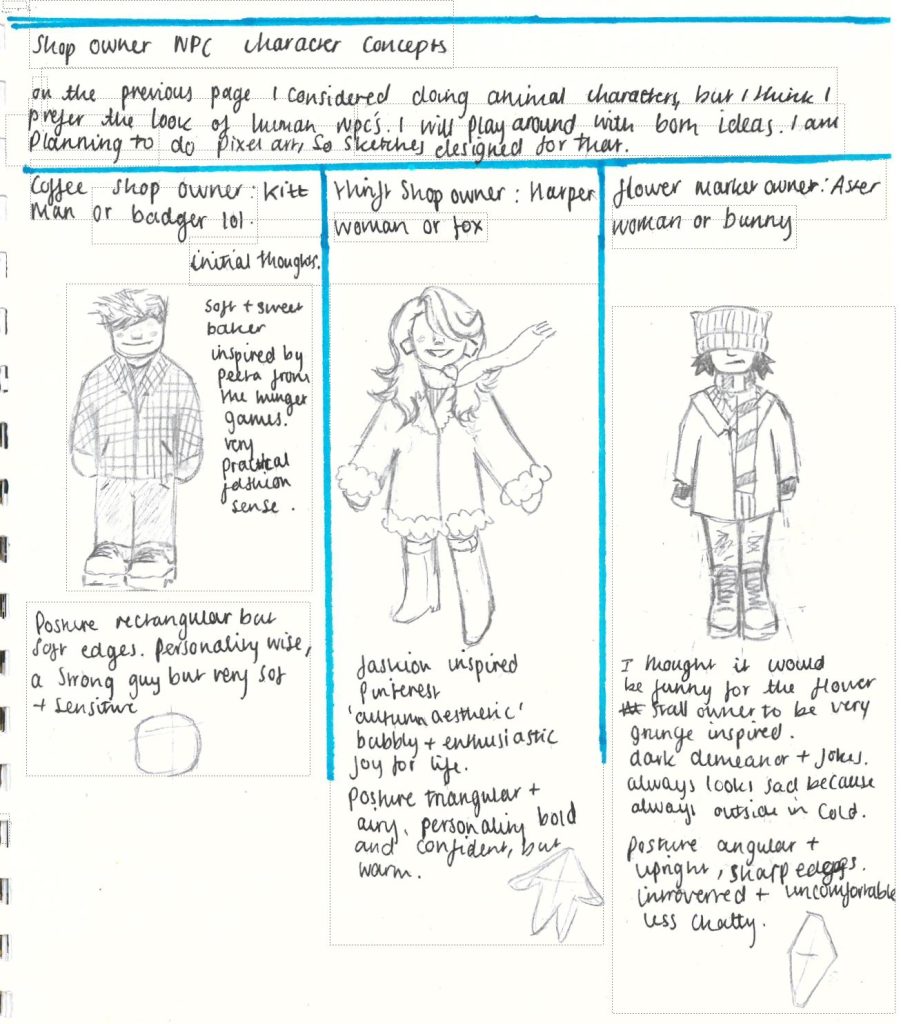
Initial ideas for Kitt: Welcoming and kind, warm personality – this reflects his job as a coffee shop owner, a place where many people will come to relax and find company.
Initial ideas for Harper: Bubbly and overexcited, joy for life – reflects her passion for fashion and self expression as well as her investment in town events.
Initial ideas for Aster: As I mentioned above, I thought it would be funny for the flower stall owner to be goth inspired, with dark dialogue and clothing in contrast with the many colours of flowers she sells.
Character Inspirations:


Kitt’s inspiration:
For Kitts character I took inspiration from two fictional male characters, Luke Danes from Gilmore Girls and Peeta Mellark from The Hunger Games.
Luke is a complex character. He frequently come across as blunt and grumpy, but deep down he cares a lot about the town and the people who live there. This results in him doing many selfless things for them yet getting little recognition. Luke’s diner is a spot where many people meet up and share a meal, and he engages in conversation with most of the locals on a first name basis. He is usually wearing a flannel shirt and a backwards cap, and is very no nonsense. Small touches like this make him a distinctive character, which is how I want Kitt to appear.
Peeta is quite different to Luke, but they do share a lot of similarities. He is outwardly kind and friendly, but like Luke he cares very deeply about people, especially those who mean a lot to him. Instead of having stereotypically masculine hobbies, His main interests are baking and painting, which he takes great care in. He is gentle but he isn’t a coward either. These personality traits remind me of the character I have in mind for Kitt.


Harper’s inspiration:
For Harper’s character I took inspiration from two fictional female characters, Phoebe Buffay From Friends and Hayley from Stardew Valley.
Phoebe is a very memorable character. I was heavily inspired by her style and outfits in the first few seasons of Friends, where she has long and sometimes wavy, golden hair. Her style in those seasons was very whimsical and based in autumnal tones. The style of the 90’s is also fashion that is commonly thrifted and re-worn today, so taking inspiration from someone from that time period seemed logical when designing Harpers character. Phoebe is passionate and loyal, but also a bit unusual and eclectic, all traits I see in Harper.
Hayley is very different to Phoebe but still inspired my design for Harper. While at first she can come across as mean, she is a very sweet character once you get to know her. She has long golden hair and a cute style, I especially took inspiration from her winter outfit. Hayley shows her emotions very intensely, and cares about things that are important to her very deeply. She is very appreciative to anyone who helps her with personal issues, and she also shows interest in the farmers interests once you build a relationship with her. I would like for Harper to reflect these characteristics.
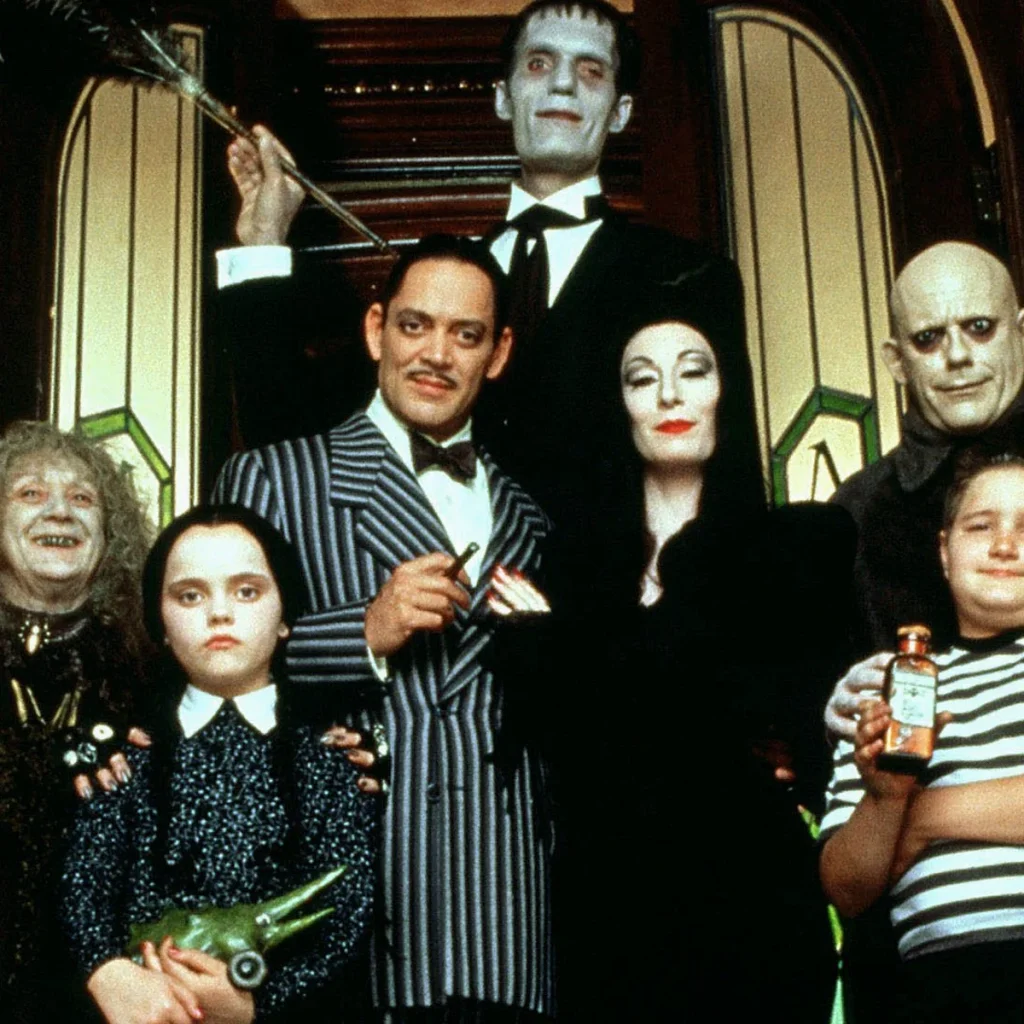
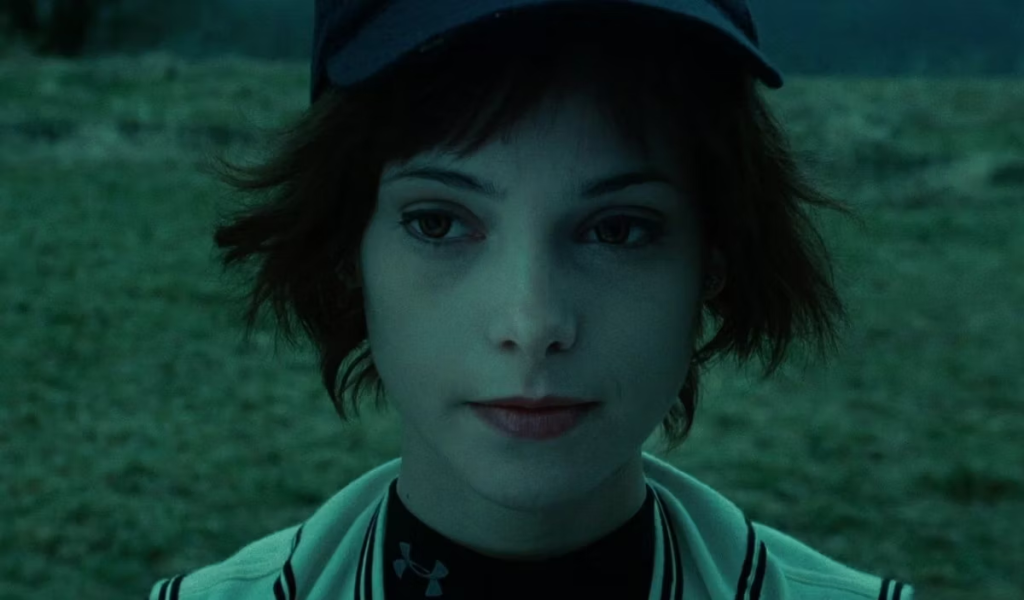
Aster’s inspiration:
For Aster’s character I took inspiration from a lot of fictional characters, namely Alice Cullen from Twilight and The Addams family, particularly Wednesday Addams.
I chose these as inspirations because I wanted Aster to have a witchy, vampiric goth aesthetic. As the aesthetics of my game are heavily influenced by autumn, I wanted to incorporate these elements into each character. Kitt resembles a cosy day, a hot drink by the fireplace. Harper resembles autumn fashion, jumpers, warm brown coats and woolly scarves. Aster resembles Halloween, evoking a spooky feel captured best in the autumn months.
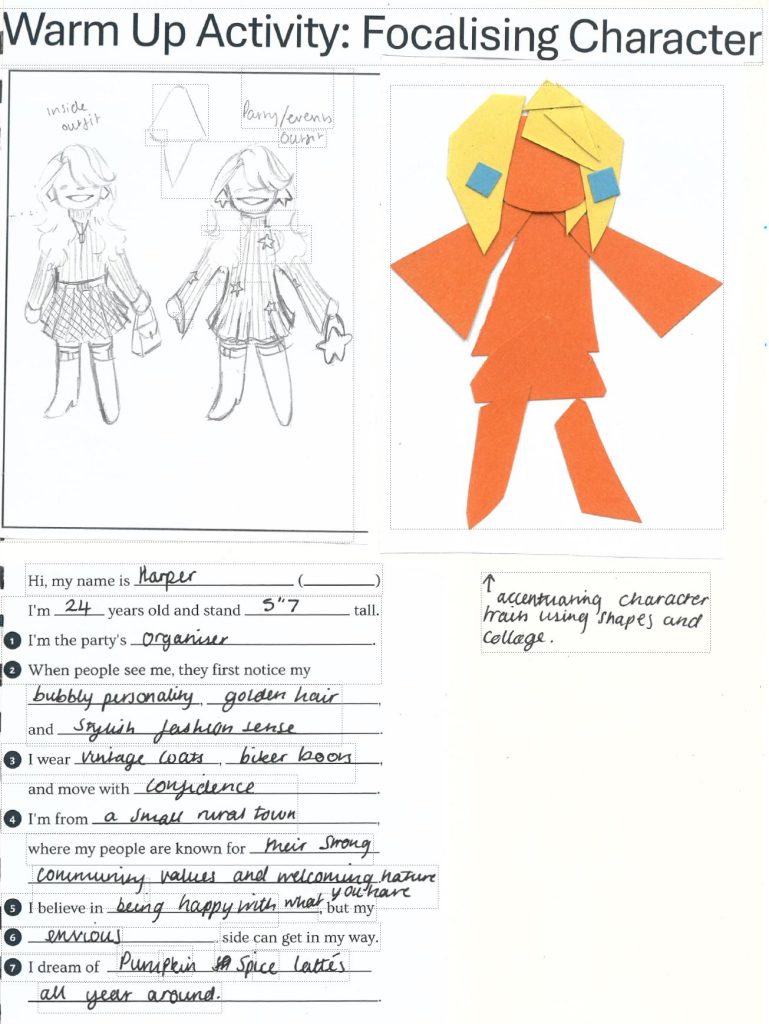
In class we explored one of our characters in more depth, here is my analysis of Harper. We also focussed on silhouettes and how they demonstrate the characters personality and behaviour. I wanted Harpers silhouette to look bold and airy, portraying a confident, easy going and bubbly personality.
Pixel Character Inspiration
As my game has a pixel art style, it is important to take into account how my characters would translate into that style. I found inspiration of how my pixel versions might look below.
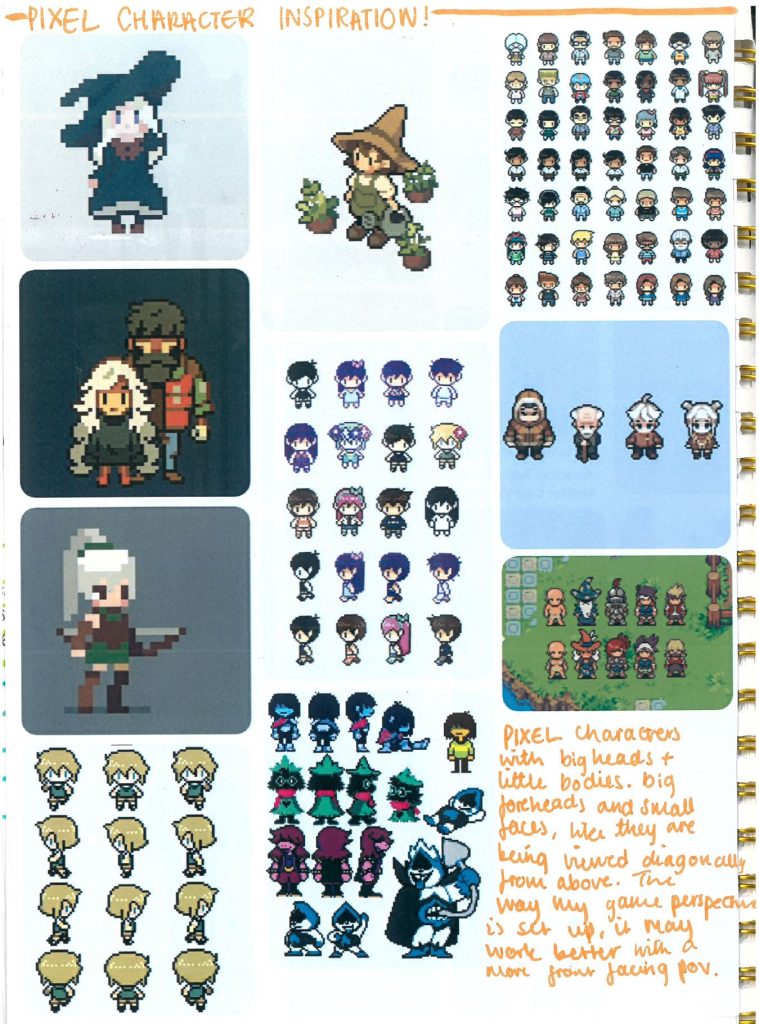
Character Mood boards
I actually made my initial character designs before the mood boards, as I already had a strong idea of what I wanted each character to be like, and how they might dress. I made the mood boards to refine their appearance and personalities, which would help when creating the final iterations.
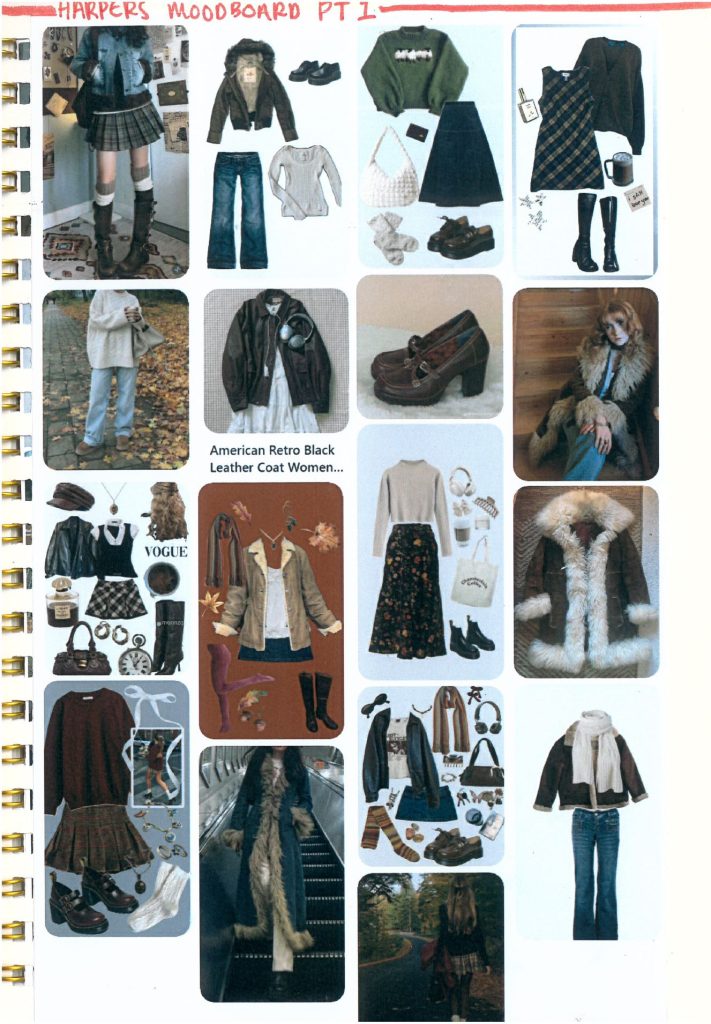
Harper’s Mood-Board:
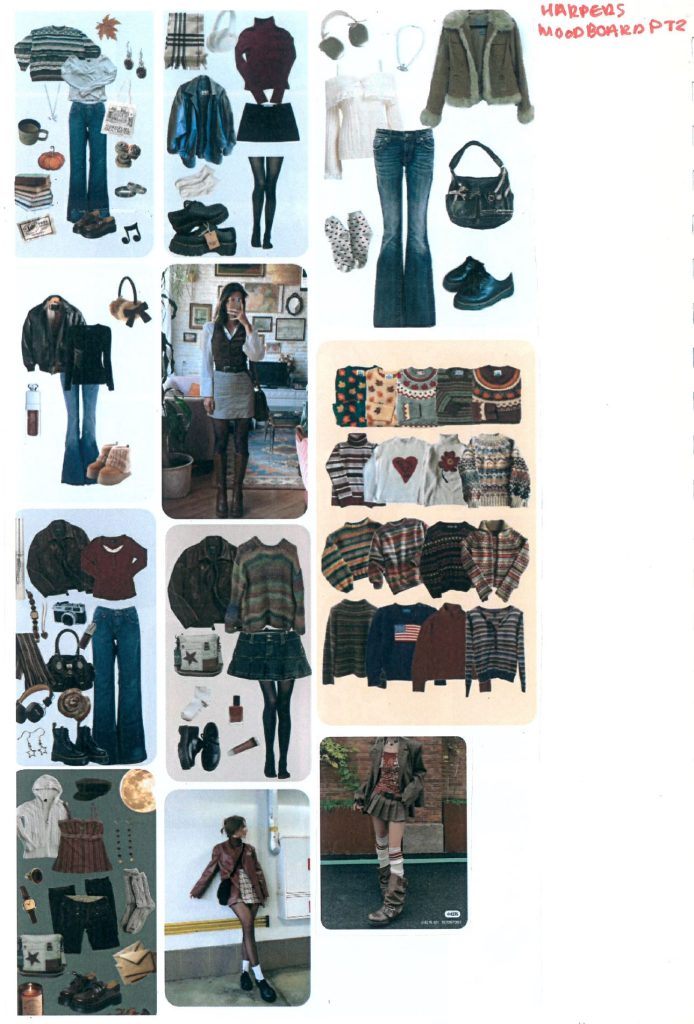
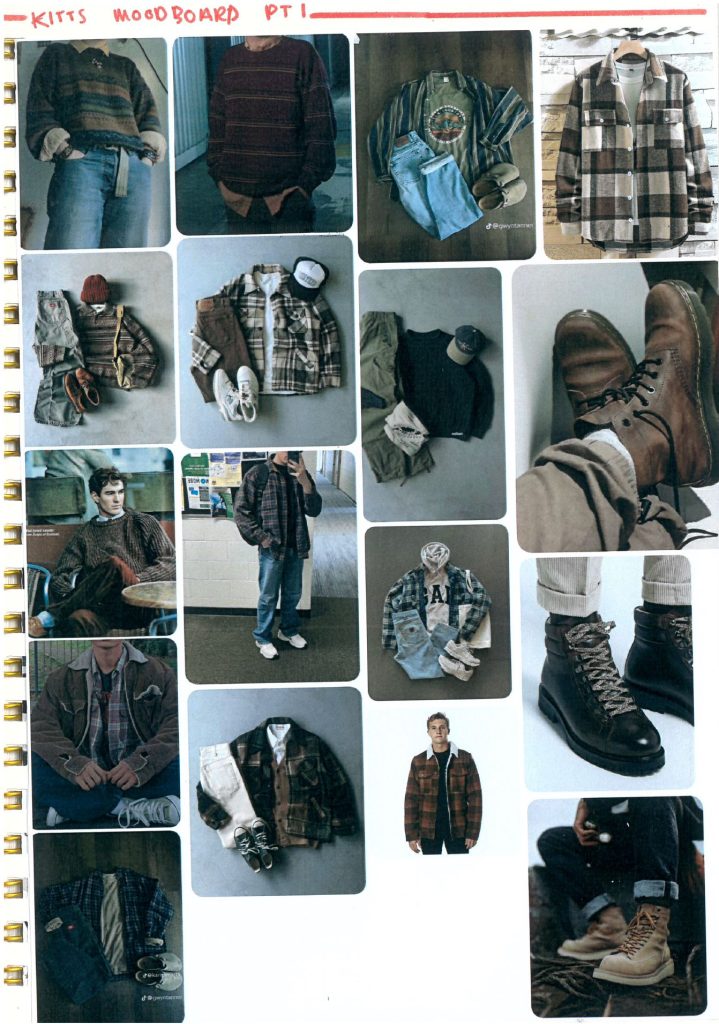
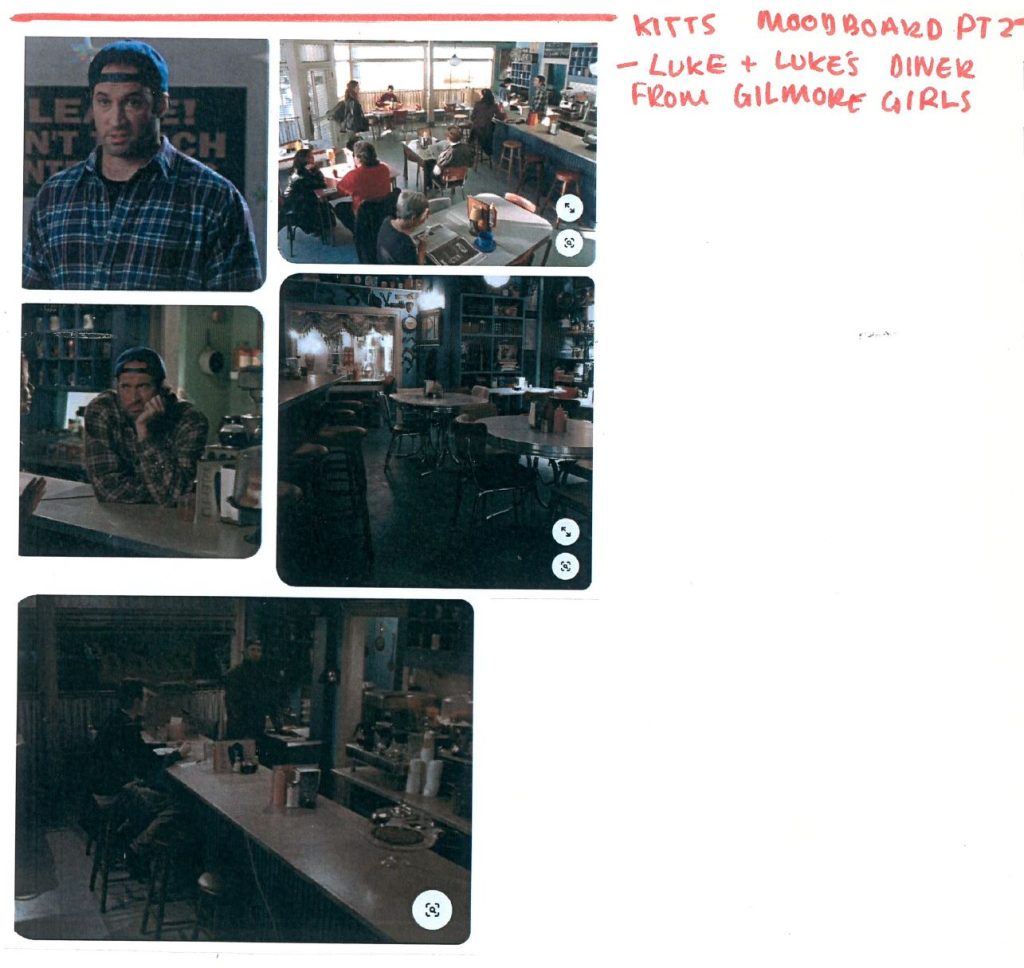
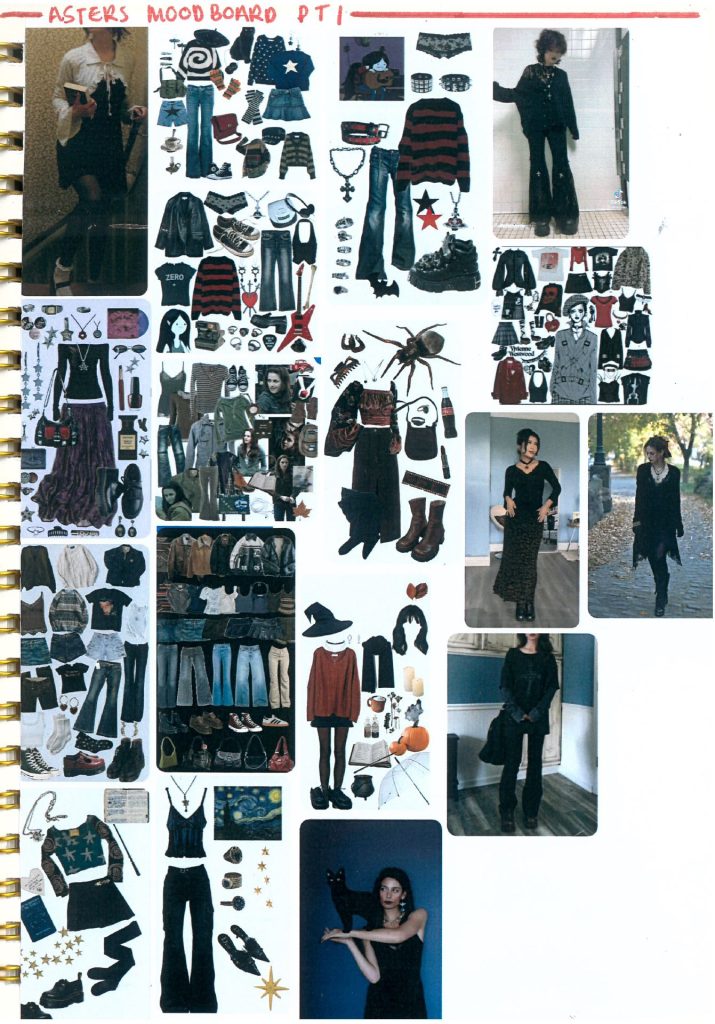
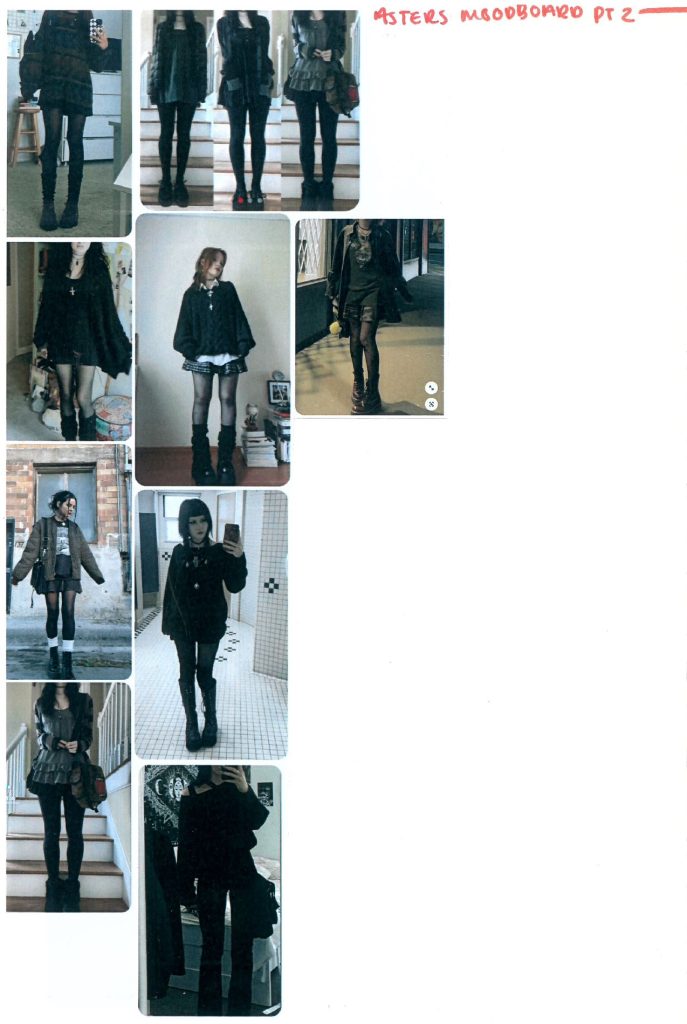
Style: For Harper’s wardrobe, I wanted to give her a very y2k autumnal look, with hints of grunge and business aesthetics. The pieces she wears are often vintage, as she is someone who prefers to buy clothes second hand – this also relates to her job as a thrift shop owner. This combination of styles gives her an eclectic but put-together appearance.
Beliefs: Harper is interested in style and fashion, and the things she wears is similar to what she likes to sell in her shop. Buying second hand and re-selling used clothes is very important to her, she hates the fast fashion industry and what it is doing to the planet. She also thinks vintage clothes are better made than high-street brands, and that repairing and re-wearing outfits is much better than only wearing something once and then throwing it out.
Town Function: I had the idea that, as the games setting is a small town, everyone would get their clothes from Harper’s shop. This means she would need lots of selection for all kinds of people living there. Harper is also very passionate about the community and its events. She helps organise and host festivities, and uses her sewing skills to assist in making costumes for school plays.
Kitts Mood-Board:
Style: Kitts outfits are practical, cosy and grunge inspired. Like the other characters in he town, his clothing is focused on autumn with lots of warm tones and browns. Kitts essential clothing consists of lace-up boots, a chequered flannel or jacket and a graphic tee.
Beliefs: As a lover of coffee, Kitt spent a lot of time in cafes in the city as a student. He hated how you pay so much money for one cup, which you throw out when you’re done. Most people would take their coffees to go and could never get a moment to sit down and take the time to enjoy their drinks. He saw no warmth between people, everyone seemed to be moving in their own directions. So he eventually opened his own shop in his hometown, focusing on community, free refills and giving people a chance to slow down and unwind.
Town Function: Everyone in town knows Kitt, as he has lived there most his life and always helps the community in any way he can. He is friendly and welcoming to all, and his cafe is a common meet-up place for everyone in town. He always lends a hand with town events, helping set up, providing refreshments and often opening up the cafe as an event venue.
Aster’s Mood-Board:
Style: Asters style still feels inspired by autumn, but in a different way to the other two characters. I focussed more on gothic, witchy aesthetics when creating her mood board to bring in Halloween aspects. She will often wear black, bootlegs and chunky shoes and jewellery.
Beliefs: Aster is much more introverted than the others, but she still does care deeply about the town. The flower business belongs to her mother, and for many years Aster didn’t care much about it. But when she got seriously ill and spent several weeks in the hospital, her mother would bring her fresh flowers every day. Aster grew a love for them and the love they represent. Once she recovered, she decided to invest more time helping her mother with the shop, and now sells flowers everyday at the market.
Town Function: Despite having lived in the town most of her life, lots of people still don’t know Asters name. However she shares an unlikely friendship with Harper who continuously vouches for her. Aster is always involved in helping set up the towns autumn events, especially the spooky ones. She chooses movies for the town movie nights, and provides the music for every event.
Secondary NPC’s:
Creating the main NPC’s stories has opened up the possibility of creating secondary NPC’s, which by interacting with could provide more depth to the games overall story. However at this point in my game creation, I don’t want to give myself too much to do without being able to complete it to a high standard, so I will leave the idea of having more NPC’s open for now.
Pixel Art Work In Progress

Guest lecture collage
In our guest lecture we made collages of our game worlds, and I chose to create one of my forage-able locations (I originally wrote forest on the page, but I meant to write meadow). I wanted the meadow to look beautiful and whimsical, full of life and colour from the plants and the surrounding environment. I think taking advantage of creative liberties when designing your own world is so exciting. For example, I imagine the game to take place in a location similar to Devon, so it wouldn’t be realistic to see the northern lights so clearly, but creating a game means you can take the artistic direction wherever you feel is appropriate. Making the Gameworld feel unique and beautiful is essential to the messaging I want to convey, I added the big text saying “There’s only one” to show this more clearly. There is only one meadow just like this, and there is only one world just like this. The affects of climate change and sustainability is an important message in my game, and hopefully if the player can appreciate the natural world they have access to, they would be happy to prevent it from falling apart.
Having the world visually change throughout the game depending on the seasons and players choice is something I am very interested in exploring. I feel like this removes the safety barrier from play, and raises the stakes behind decision making.
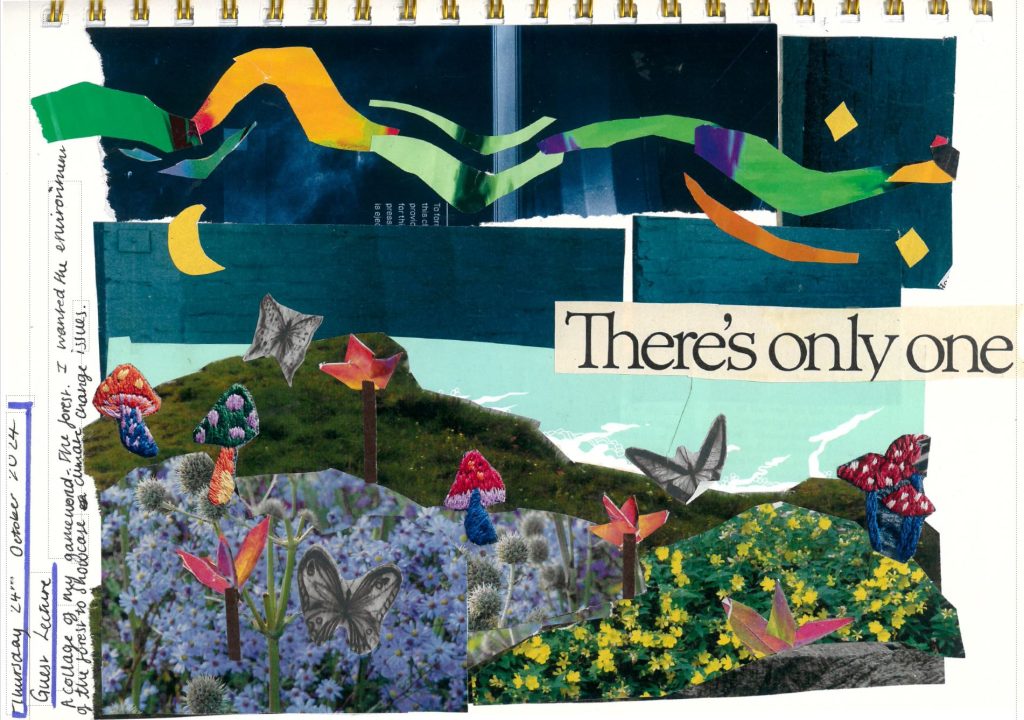
Reply